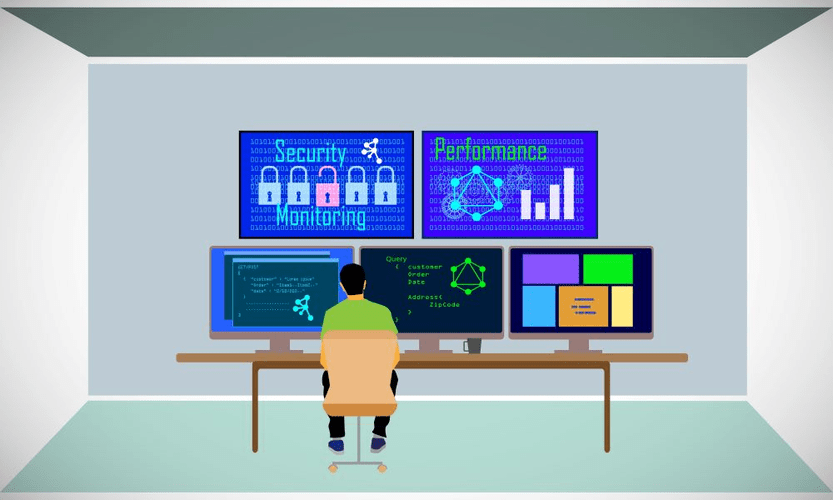Content
Understanding what challenges you can overcome using Statistics. Data Scientists manipulate data using both SQL and Pandas. Because there are certain data manipulation tasks that are easy to perform using SQL, and there are certain tasks that can be done efficiently using Pandas. I personally like to use SQL for retrieving data and do the manipulation in Pandas.
If you would prefer learning about Tensorflow, then this is one of the best Python books currently available in the market. This is the first book I have read on Python, and I have recommended it to a countless number of developers, and the best part is, none of them have said that this book is not helpful. FreeCodeCamp and Maxwell Armi put are responsible for putting together and making available this 12 hour (that’s right, 12 hour!) course on using Python and its ecosystem to write data science code. Get the FREE collection of 50+ data science cheatsheets and the leading newsletter on AI, Data Science, and Machine Learning, straight to your inbox. By doing the coding exercises in this book, you will learn how to implement the theoretical concepts you learned in Andrew Ng’s course using Python. Once you are done with that, read the book “Hands-On Machine Learning with Scikit-Learn and TensorFlow”.
Perform Machine Learning using Scikit-Learn
Learn Python programming fundamentals such as data structures, variables, loops, and functions. Learn to work with data using libraries like NumPy and Pandas. This is probably the best book for manipulating, processing, cleaning, and crunching data in Python and learning Pandas for real work. This is the first specialized Python book on Data Analysis and Data Science.
- The easiest way to proceed is to just download Anaconda from Continuum.io .
- I personally like to use SQL for retrieving data and do the manipulation in Pandas.
- They also start solving Python programming riddles on websites like LeetCode with an assumption that they have to get good at programming concepts before starting to analyzing data using Python.
- This book covers essential topics like File/IO, data structures, networking, algorithms, etc.
Python is a universal language that is used by both data engineers and data scientists and probably the most popular programming language, as well. The course is hands-on by design, takes learning step by step, and provides a strong foundation in Python language concepts as it goes. Data science concepts are covered along the way, and are focused on more exclusively in the final sections of the course. A final course project looking at COVID trend analysis is undertaken using the Python tools you’ve learned along the way. Check it out on our courses portal and start your data science journey today. That’s all about some of the best Python books for learning Data Science and Machine Learning. I know courses are more active and engaging, and I don’t suggest learning from online classes, but books also have their place.
Succeed with personalized services.
They are the most authoritative and complete source, or learning any technology and combining a good book with an excellent online course can really help you to take your skill to the next level. The book not only covers python basics but also provides simple automation tips that will help in your day-to-day tasks. This is especially good for Data scientists and Business analysts who are involved in Data analysis and deal with a large amount of data. Scikit-Learn is one of the most popular Machine Learning Libraries in Python. Your goal is to learn how to implement some of the most common machine learning algorithms using Scikit-Learn. Code Academy has an excellent course on Python, it takes you approximately 20 hours to complete it. You don’t have to upgrade to the Pro Version as your goal is just to get familiar with the basics of Python programming language.
- The simplest way for you to install Jupyter Notebook on your computer is by installing Anaconda.
- By doing the coding exercises in this book, you will learn how to implement the theoretical concepts you learned in Andrew Ng’s course using Python.
- If you have any questions or feedback, then please drop a note.
- Even though it is slightly lighter on machine learning but the second half of the book is fully dedicated to neural networks.
- Now that you have made up your mind, it is time to set up your machine.
- Go through lecture 10 to lecture 18 from CS109 course from Harvard.
- StatsModels website has good tutorials on how to implement statistical concepts using Python.
- It’s such an essential part of a Data Scientist’s day-to-day job that almost all the people I have spoken to recommended the “Automate The Boring Stuff With Python” book.
All of these topics are an excellent base for any tech-driven career, including Data Science and Machine learning. Matthew Mayo (@mattmayo13) is a Data Scientist and the Editor-in-Chief of KDnuggets, the seminal online Data Science and Machine Learning resource. His interests lie in natural language processing, algorithm design and optimization, unsupervised learning, neural networks, and automated approaches to machine learning.
More Recent Posts
At this stage, I would suggest you to quickly learn just how to create the basic charts in Matplotlib and not to focus on Seaborn. Data scientists spend most of their time cleaning data, which is also called as data munging or data wrangling. After installing Anaconda, go through this article on Code Academy to learn how to use Jupyter Notebooks. Additionally, you can also follow one of the best courses on Machine Learning course from Yaser Abu-Mostafa.
I am myself new to deep learning, so please take these suggestions with a pinch of salt. You will find everything here – lectures, datasets, challenges, tutorials. You can also try the course from Geoff Hinton a try in a bid to understand the basics of Neural Networks. Scikit-learn is the most useful library on python for machine learning.
Automate The Boring Stuff With Python
Go through lecture 10 to lecture 18 from CS109 course from Harvard. You will go through an overview of machine learning, Supervised learning algorithms like regressions, decision trees, ensemble modeling and non-supervised learning algorithms like clustering. Follow individual lectures with the assignments from those lectures. At the same time, it also walks through basic python exercises that will teach you how to apply Pandas to actual problems. This is one of the things I always look at in books and online courses as we learn more about solving real problems and using our skills. To make the deal even sweeter, Python also has algorithms, analytics, and data visualization libraries like Matplotlib, which is an essential data scientist.
What should I learn before Python?
Programming languages fall into two categories: Those that require a compilation step prior to running (such as Java and C) and those that are interpreted directly from the source code (like JavaScript and Ruby).
Most people recommend Think Stats to learn Statistics with Python but the author teaches his own custom functions instead of using standard Python libraries like Statsmodels for doing Statistics. Wes McKinney, the creator of Pandas, has written a fantastic book called “Python for Data Analysis”. Go through the chapters 4, 5, 7, 8 and 10 to learn Pandas and Numpy. These chapters cover most frequently used Numpy and Pandas features for manipulating data.


